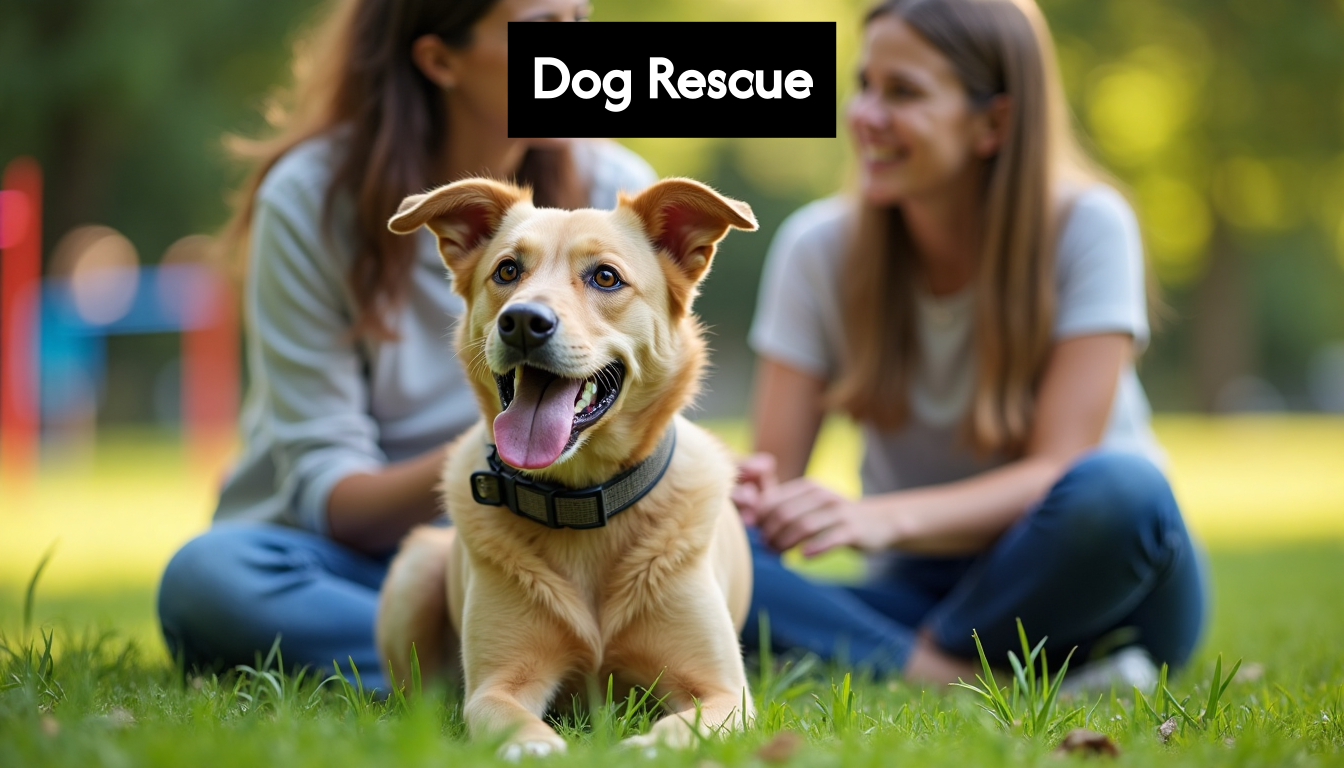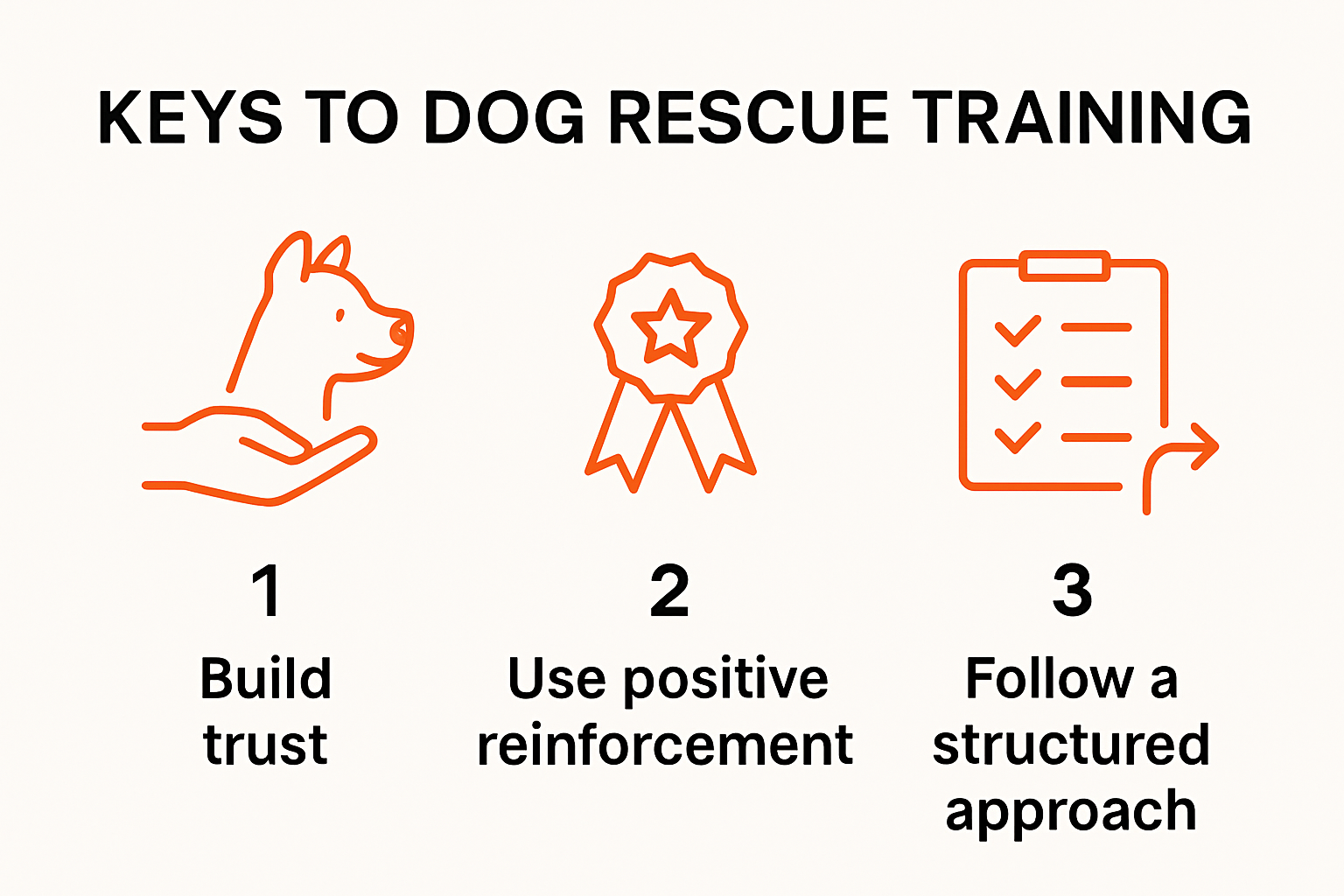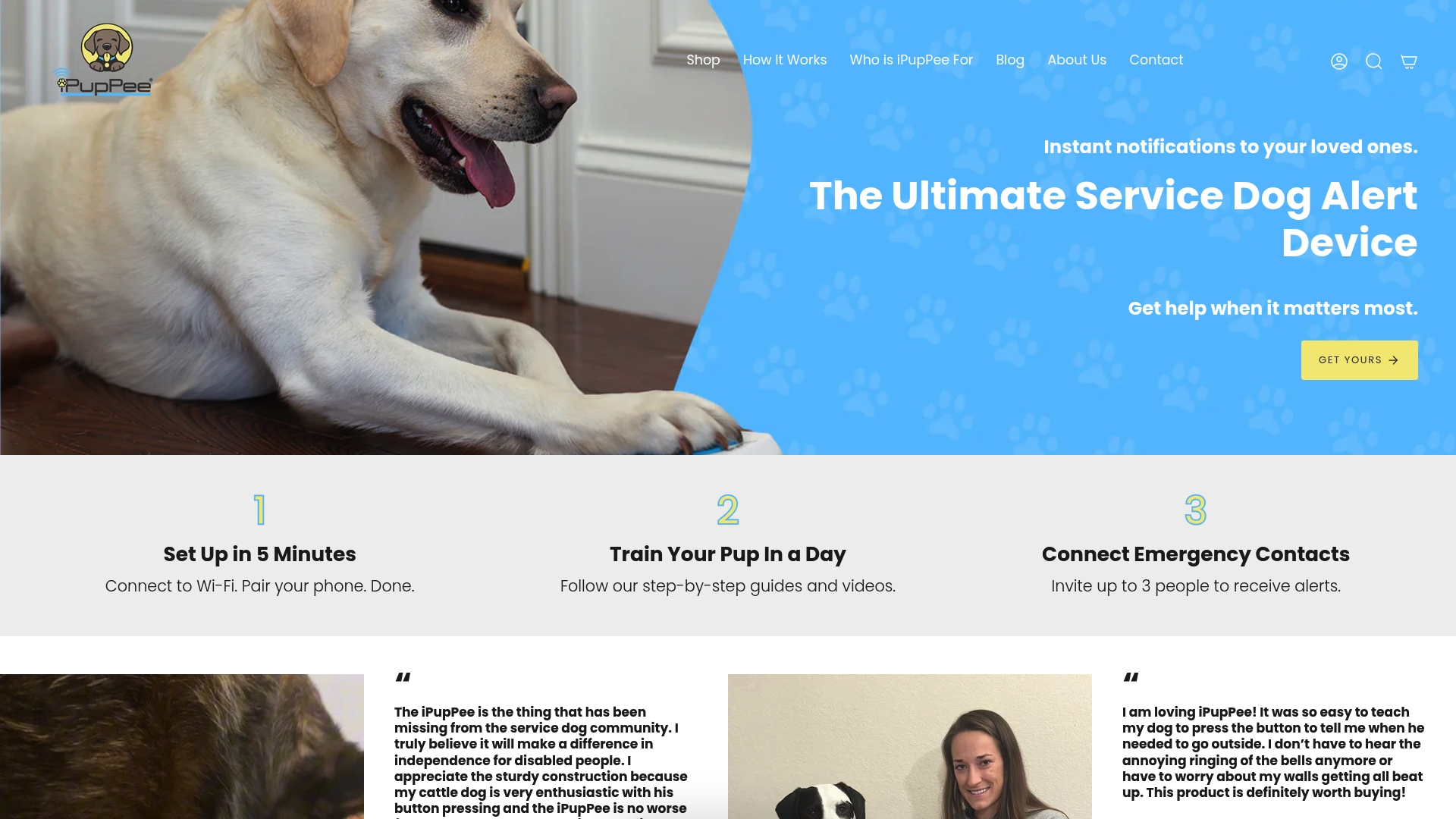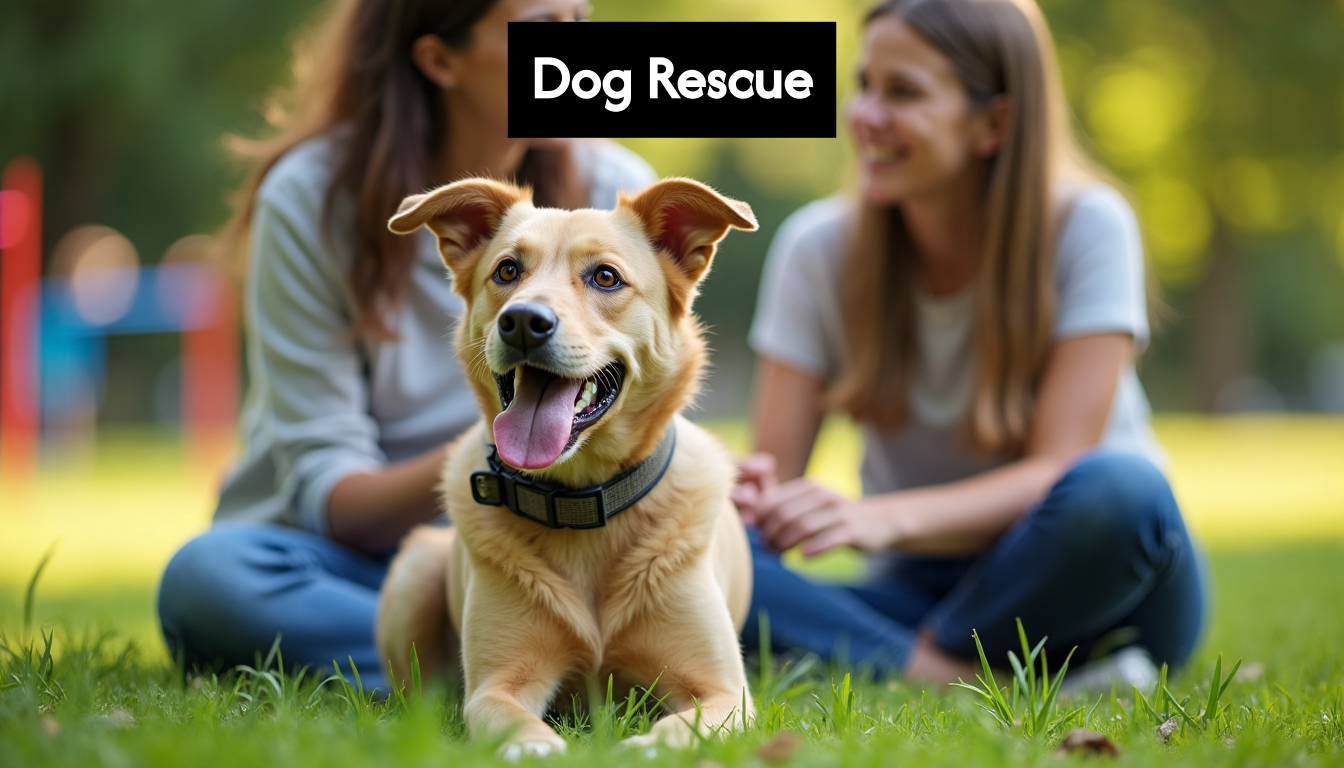
Training a rescue dog is about more than teaching sit and stay. Around 55 percent of successful adoptions come from early reward based training, yet many owners still rely on outdated discipline methods. What really sets standout rescues apart is a focus on trust and emotional safety long before any commands are taught.
Table of Contents
- Understanding Dog Rescue Training Basics
- Step-By-Step Training Methods For Rescue Dogs
- Addressing Common Rescue Dog Challenges
- Resources For Owners, Handlers, And Organizations
Quick Summary
| Takeaway | Explanation |
|---|---|
| Build Trust | Establishing trust and creating a safe learning environment is crucial for training rescue dogs due to their complex emotional histories. |
| Utilize Positive Reinforcement | Employing positive reinforcement methods rather than punishment helps rebuild trust and encourages desired behaviors while preventing unwanted actions. |
| Structured Progressive Training | Follow a systematic approach that includes foundational trust-building exercises and gradually exposes dogs to various challenges for effective training outcomes. |
| Focus on Socialization | Incremental exposure to new experiences and environments enhances social skills and reduces anxiety in rescue dogs, improving their adaptability for adoption. |
| Access Comprehensive Resources | Utilizing professional training, organizational support, and volunteer opportunities can enhance skills and knowledge, improving the chances of successful rehabilitation for rescue dogs. |

Understanding Dog Rescue Training Basics
Rescue dogs arrive with unique backgrounds and experiences that require specialized training approaches. Unlike puppies raised in consistent environments, rescue dogs often carry complex emotional histories that demand patience, understanding, and strategic rehabilitation techniques.
Foundational Training Principles for Rescue Dogs
Training a rescue dog begins with establishing trust and creating a safe learning environment. These dogs may have experienced trauma, neglect, or inconsistent handling, which means traditional training methods might not always work effectively. Learn more about building canine trust through progressive, compassionate techniques that prioritize emotional safety alongside behavioral training.
Consistency becomes paramount in dog rescue training. According to research from Four Paws, dogs learn best when training cues and rewards are clear and delivered promptly after the desired behavior. This approach helps reinforce correct actions while preventing undesirable behaviors from developing or persisting.
Psychological Approach to Rescue Dog Training
Understanding a rescue dog’s psychological state is crucial. Many rescue dogs exhibit anxiety, fear, or reactive behaviors stemming from past experiences. Trainers must recognize these signals and adapt training strategies accordingly. This might involve slower progression, more frequent positive reinforcement, and creating predictable training routines that help the dog feel secure.
Motivation plays a critical role in successful training. Experts recommend dividing exercises into small, manageable steps to prevent mental overload and maintain the dog’s engagement. Breaking complex tasks into bite sized learning opportunities helps rescue dogs build confidence gradually.
Practical Training Strategies
Effective rescue dog training requires a multifaceted approach. Start with fundamental obedience skills like basic commands, but integrate them with emotional rehabilitation techniques. Focus on positive reinforcement methods that reward desired behaviors rather than punishing mistakes. This approach helps rebuild the dog’s trust in human interactions and creates a positive learning environment.

Repetition and practice in various environments are essential for reliable behavior. As training professionals suggest, dogs need to generalize learned behaviors across different contexts. This means practicing commands not just in a controlled training space, but in parks, on walks, and in various home scenarios.
Successful dog rescue training is a journey of patience, understanding, and consistent effort. By recognizing each dog’s unique background and tailoring training approaches to their specific needs, owners can transform rescue dogs into confident, well adjusted companions ready to thrive in their new homes.
Step-by-Step Training Methods for Rescue Dogs
Training rescue dogs requires a systematic, compassionate approach that recognizes their unique psychological and behavioral backgrounds. Unlike traditional dog training, rescue dog methods demand heightened sensitivity, patience, and strategically designed progressive techniques.
Initial Assessment and Baseline Establishment
Before diving into specific training protocols, conducting a comprehensive initial assessment is crucial. This involves understanding the dog’s previous experiences, identifying potential trauma triggers, and evaluating baseline behavioral responses. Explore essential service dog training techniques that can help create personalized training strategies.
According to worldwide training research, modern rescue dog training emphasizes science-based, positive reinforcement techniques grounded in behavioral research. Professional trainers continuously update their methods to reflect the latest findings in canine cognition and psychology.
Structured Progressive Training Approach
Successful rescue dog training follows a carefully structured progression. The training typically spans at least two years, focusing initially on foundational trust-building exercises. Canine behavior experts recommend a phased approach that begins with playful task introductions, gradually exposing dogs to various terrains and systematically desensitizing them to potential distractions.
Key training phases include:
- Trust Building: Establishing safe, predictable interactions
- Basic Obedience: Teaching fundamental commands
- Emotional Regulation: Managing anxiety and reactive behaviors
- Advanced Skills: Developing specialized task competencies
Holistic Training Integration
Comprehensive rescue dog training extends beyond behavioral modification. Comprehensive research indicates successful programs integrate physical health, mental stimulation, and collaborative approaches with veterinarians and nutritionists.
This holistic method addresses underlying health issues while simultaneously developing behavioral skills. Trainers focus on creating well rounded companions capable of adapting to new environments and forming strong, trusting relationships with their handlers.
The most effective rescue dog training recognizes that each dog represents a unique journey. By combining scientific understanding, emotional intelligence, and structured methodical approaches, handlers can transform rescue dogs into confident, responsive, and well adjusted companions ready to thrive in their new homes.
Addressing Common Rescue Dog Challenges
Rescue dogs often arrive with complex behavioral and emotional challenges that require specialized intervention strategies. Understanding and effectively addressing these challenges is crucial for successful rehabilitation and long-term companionship.
Behavioral Modification Techniques
Many rescue dogs struggle with anxiety, fear-based reactions, and social adaptation. Learn practical safety strategies that can help manage and mitigate these challenging behaviors. According to research from Humane Pro, early reward-based training can increase adoption retention rates by up to 55%, demonstrating the critical importance of positive reinforcement approaches.
Key behavioral challenges typically include:
- Separation Anxiety: Excessive stress when left alone
- Reactivity: Overresponding to environmental stimuli
- Trust Issues: Difficulty forming secure attachments
- Previous Trauma Responses: Triggered defensive behaviors
Socialization and Exposure Strategies
Successful rehabilitation requires carefully managed socialization experiences. Shelter dog statistics reveal that dogs participating in outings or short-term fostering programs can see their adoption odds increase by 500% and 1,400% respectively. This underscores the importance of gradual, controlled exposure to new environments, people, and other animals.
Trainers recommend a structured approach:
- Introduce new experiences incrementally
- Use positive reinforcement during socialization
- Monitor stress levels during interactions
- Create predictable, safe interaction scenarios
Long-Term Rehabilitation Approaches
Comprehensive rescue dog rehabilitation extends beyond immediate behavioral interventions. Training research indicates that trained rescue dogs are adopted approximately 1.5 times more frequently than untrained dogs, highlighting the significance of systematic skill development.
Effective long-term strategies include:
- Consistent training routines
- Professional behavioral assessments
- Individualized training plans
- Ongoing mental and physical stimulation
Addressing rescue dog challenges requires patience, understanding, and a holistic approach. By recognizing each dog’s unique background and implementing targeted intervention strategies, handlers can transform challenging behaviors into opportunities for growth, trust, and deep companionship. The journey of rehabilitation is not just about correcting behaviors but about rebuilding confidence and creating a secure, loving relationship between the dog and its new family.
Resources for Owners, Handlers, and Organizations
Successful dog rescue training requires access to comprehensive resources that support both human handlers and the dogs they work with. Navigating the complex landscape of rescue dog development demands strategic tools, educational materials, and professional support systems.
Professional Training and Educational Resources
Professional organizations offer extensive resources for rescue dog training. Learn about essential service dog skills that can enhance your understanding of specialized training techniques. The American Rescue Dog Association (ARDA) provides specialized training events and seminars covering critical areas like wilderness search, disaster response, and human remains detection. According to ARDA resources, these programs connect handlers with expert instructors worldwide, offering unparalleled opportunities for skill development.
Organizational Support and Free Resources
Rescue organizations can leverage comprehensive support platforms. CHAAMP offers an extensive collection of free resources including:
- Online training modules
- Educational materials
- Data management tools
- Fear Free Shelter Program access
- Pet Rescue Resource toolkit with step-by-step training plans
These resources provide critical support for organizations working to rehabilitate and rehome rescue dogs, ensuring they have access to cutting-edge training and management strategies.
International Training and Volunteer Opportunities
Unique volunteer programs provide hands-on training experiences for dedicated handlers. Volunteer initiatives like the Tracking & Rescue Dog Trainer program in Zimbabwe offer comprehensive training that includes:
- Canine first aid techniques
- Advanced scent detection methods
- Search and rescue operational skills
- Hands-on field experience
These programs not only develop critical skills but also create global networks of rescue dog professionals committed to improving canine welfare and rescue capabilities.
The landscape of dog rescue training is continuously evolving, with resources becoming increasingly sophisticated and accessible. By leveraging professional organizations, online platforms, and international training opportunities, owners, handlers, and rescue organizations can access the knowledge and support necessary to transform rescue dogs’ lives. The key lies in continuous learning, collaboration, and a deep commitment to understanding and supporting these remarkable animals through their rehabilitation journey.
Frequently Asked Questions
What is the best training method for rescue dogs?
Utilize positive reinforcement techniques that reward desired behaviors rather than using punishment. This method fosters trust and encourages a safe learning environment for rescue dogs.
How can I build trust with my rescue dog?
To build trust, create a safe, predictable environment and engage in trust-building exercises. Focus on consistent interactions and positive reinforcement to help your rescue dog feel secure.
What are common issues faced when training rescue dogs?
Common issues include anxiety, fear-based reactions, and difficulty with socialization. Address these with gradual exposure and behavioral modification techniques that emphasize positive reinforcement.
How long does it take to train a rescue dog?
Training a rescue dog is generally a multi-year process that involves introducing foundational trust-building exercises, basic obedience skills, and emotional regulation techniques, all tailored to the dog’s individual needs.
Transform Trust Into Lifelong Communication With Your Rescue Dog
Does your rescue dog struggle with anxiety, fear, or adapting to new routines? As highlighted in “Dog Rescue Training: Keys to Success for Owners & Handlers 2025,” building trust and clear communication are the heart of successful training for rescue and rehomed dogs. Every small breakthrough matters, whether you are teaching basic commands or working through past traumas. Imagine being able to give your dog a simple, reliable way to tell you when it needs help or wants your attention—creating a secure bond and reducing stress for both of you.

Take the next step toward confidence and independence for your pup. Discover how the iPupPee alert device empowers dogs to communicate their needs simply with the touch of a button. It is especially helpful for building trust and easing anxiety in rescue dogs, while also offering vital safety for owners living alone or with disabilities. Ready for a stronger connection and safer daily life? Visit our main site to see real customer experiences and step-by-step guidance. Act now and help your rescue dog thrive in its forever home.

